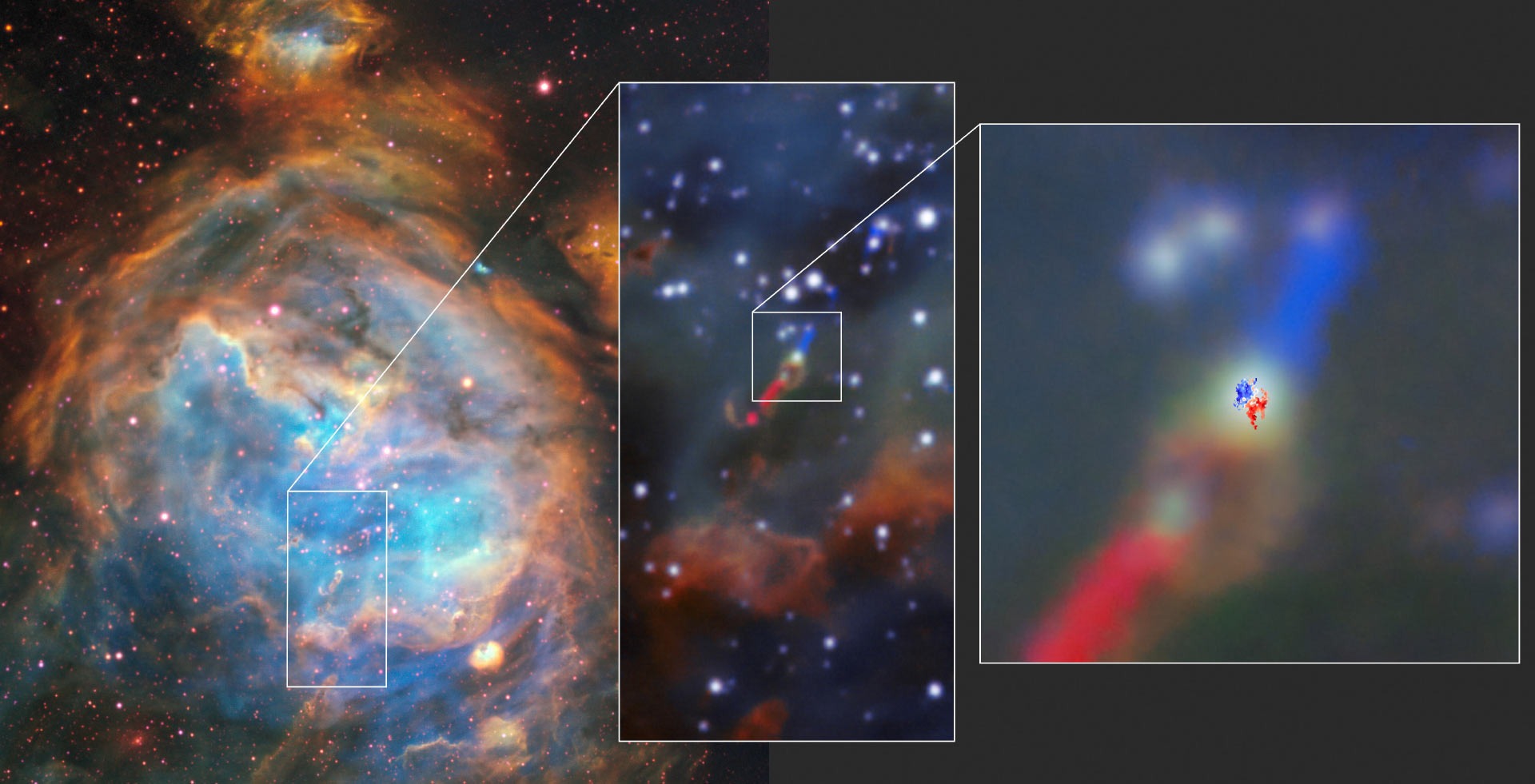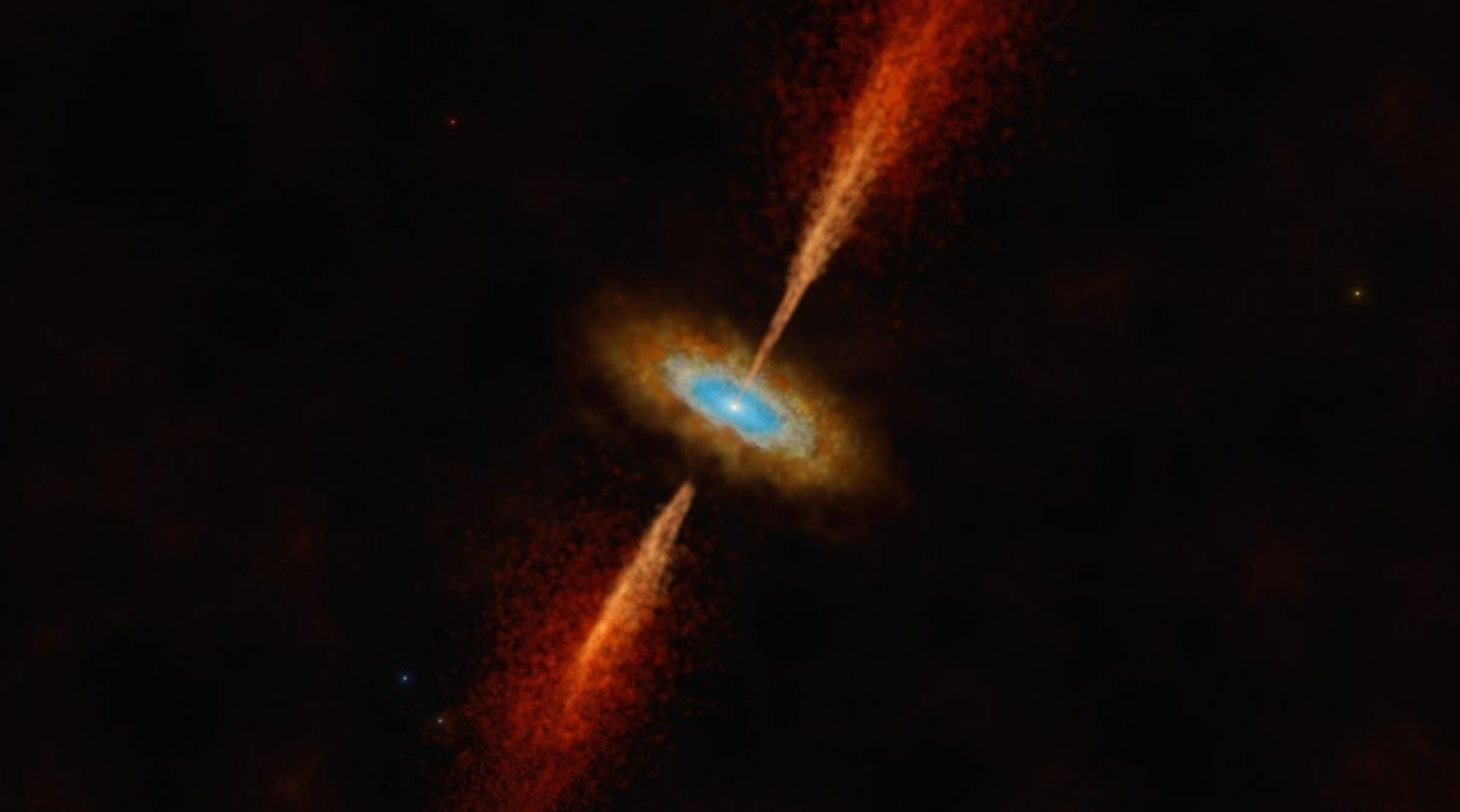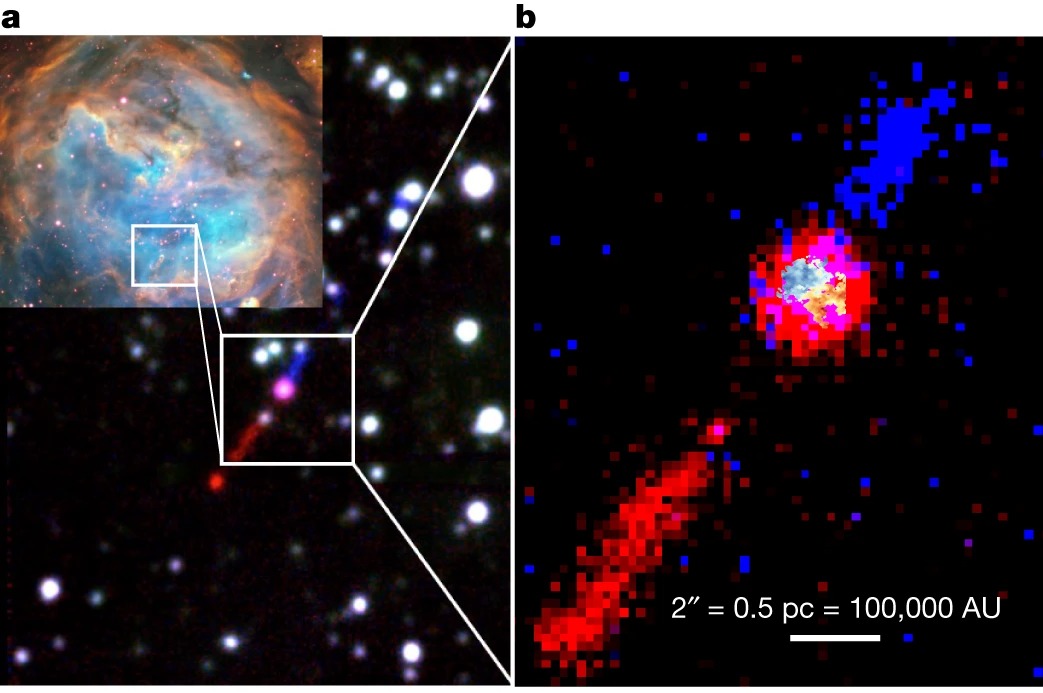Astronomers using the Atacama Large Millimeter/submillimeter Array (ALMA) in Chile made an amazing result. They managed to get images of a protoplanetary disk surrounding a star in another galaxy. The object with the designation HH 1177 is located in the Large Magellanic Cloud. The surrounding disk has a diameter of up to 12 thousand AU. Scientists published the results of their observations in the journal Nature.

The Large Magellanic Cloud is a satellite galaxy of the Milky Way, located about 160 thousand light-years away from it. It is much smaller and has a smaller amount of stars. Its chemical composition is also different: it is characterized by a lower content of metals and dust.
Astronomers have found that HH 1177 is about 15 times heavier than the Sun. Such massive stars form much faster, but also live much shorter than less massive sun-like stars.

The protoplanetary disk around the star was noticed due to the low metal content, which led to the heating of the material near it to higher temperatures. It also makes the disk more resistant to fragmentation. These two factors made the star and its surroundings bright enough to be seen in the optical range. Previously, similar disks were hard to detect due to their higher metallicity and, as a result, low brightness.
For the first time, HH 1177 attracted the attention of astronomers in 2018. Then they suggested that the star might have a protoplanetary disk due to the presence of a jet. It is an indicator of the dynamics of accretion. This gave the scientists a reason to submit a proposal for observations using ALMA, which confirmed the presence of the disk.

Researcher Anna McLeod expresses the hope that further research using the James Webb Space Telescope will provide more detailed information about the disk. Its discovery will make it possible to study the processes of planet formation in the star HH 1177 and compare them with similar processes in other galaxies — in particular in the Large Magellanic Cloud.
Earlier we reported on how James Webb revealed the process of formation of rocky planets.
According to sci.news
Follow us on Twitter to get the most interesting space news in time
https://twitter.com/ust_magazine


